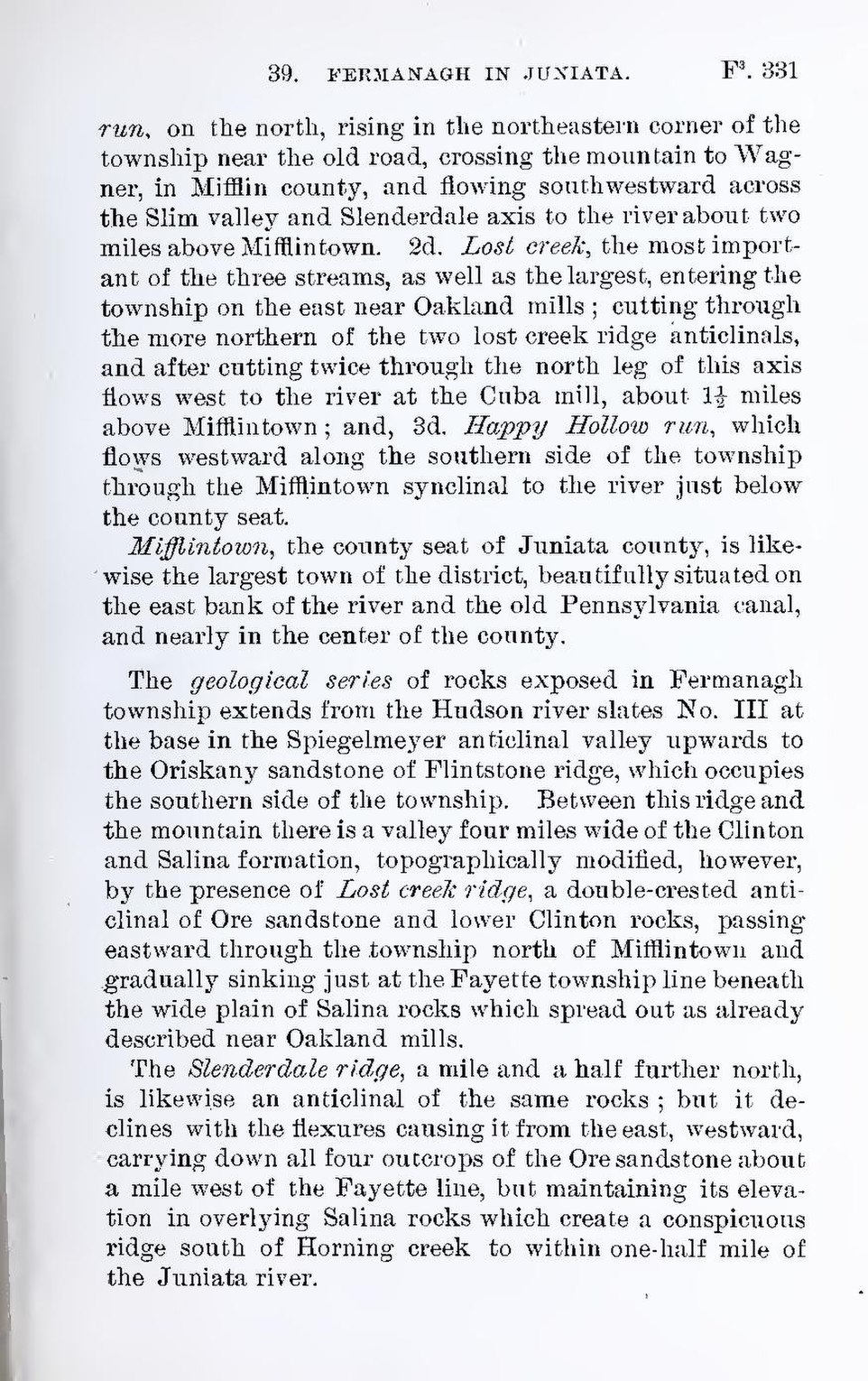run, on the north, rising in the northeastern corner of the township near the old road, crossing the mountain to Wagner, in Mifflin county, and flowing southwestward across the Slim valley and Slenderdale axis to the river about two miles above Mifflintown. 2d. Lost creek, the most important of the three streams, as well as the largest, entering the township on the east near Oakland mills; cutting through the more northern of the two lost creek ridge anticlinals, and after cutting twice through the north leg of this axis flows west to the river at the Cuba mill, about 1½ miles above Mifflintown; and, 3d. Happy Hollow run, which flows westward along the southern side of the township through the Mifflintown synclinal to the river just below the county seat.
Mifflintown, the county seat of Juniata county, is likewise the largest town of the district, beautifully situated on the east bank of the river and the old Pennsylvania canal, and nearly in the center of the county.
The geological series of rocks exposed in Fermanagh township extends from the Hudson river slates No. III at the base in the Spiegelmeyer anticlinal valley upwards to the Oriskany sandstone of Flintstone ridge, which occupies the southern side of the township. Between this ridge and the mountain there is a valley four miles wide of the Clinton and Salina formation, topographically modified, however, by the presence of Lost creek ridge, a double-crested anticlinal of Ore sandstone and lower Clinton rocks, passing eastward through the township north of Mifflintown and gradually sinking just at the Fayette township line beneath the wide plain of Salina rocks which spread out as already described near Oakland mills.
The Slenderdale ridge, a mile and a half further north, is likewise an anticlinal of the same rocks; but it declines with the flexures causing it from the east, westward, carrying down all four outcrops of the Ore sandstone about a mile west of the Fayette line, but maintaining its elevation in overlying Salina rocks which create a conspicuous ridge south of Horning creek to within one-half mile of the Juniata river.
